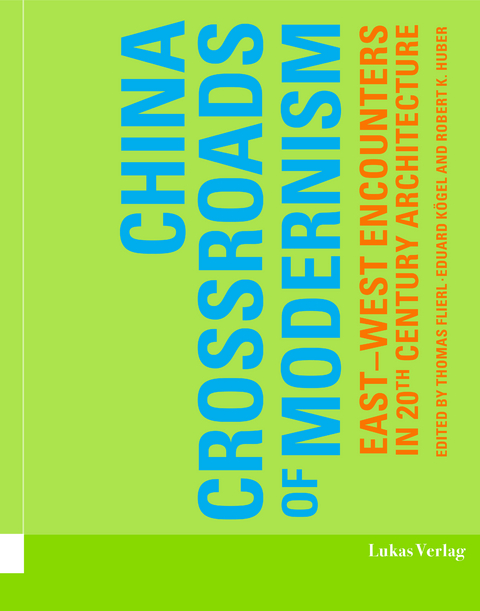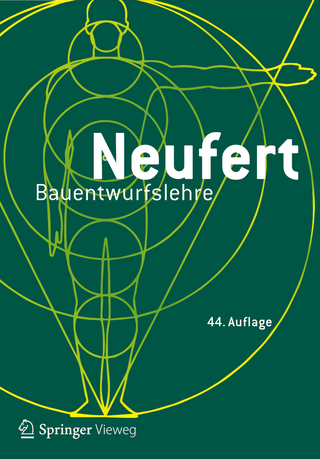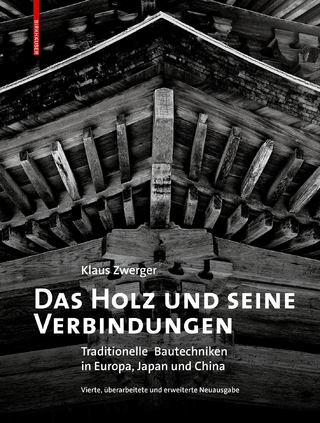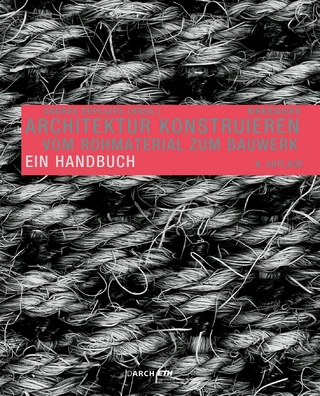
China – Crossroads of Modernism
East-West Encounters in 20th Century Architecture
Seiten
2025
Lukas Verlag für Kunst- und Geistesgeschichte
978-3-86732-471-7 (ISBN)
Lukas Verlag für Kunst- und Geistesgeschichte
978-3-86732-471-7 (ISBN)
- Noch nicht erschienen (ca. Februar 2025)
- Versandkostenfrei innerhalb Deutschlands
- Auch auf Rechnung
- Verfügbarkeit in der Filiale vor Ort prüfen
- Artikel merken
Modernism did not only take place in Europe, but also in multiple variations in East Asia. For example, Chinese students in the West came into contact with the themes and transformed them after returning home. This book brings together selected perspectives from China and (mainly) Germany that discuss the mutual influence.
Modernism did not only take place in Europe, but also in multiple variations in East Asia. For example, Chinese students in the West came into contact with the themes and transformed them after returning home. This book brings together selected perspectives from China and (mainly) Germany that discuss the mutual influence.As an introduction, Eduard Kögel presents a panorama of architectural development in China from the 1920s to the 1970s. For the first time ever, Chunyan Zhang addresses how the ideas of the Bauhaus entered the Chinese discourse in the 1940s and how important the Bauhaus books were in this context. Li Hou takes up Richard Paulick's period of emigration to Shanghai (1933-1949) and discusses his enormous influence on urban planning. Wen-chi Wang explains the intercultural practice of Chen-kuan Lee, who founded the Chinese Werkbund in Berlin in 1941 together with Hugo Häring and Hans Scharoun, whose ideas also influenced the protagonists in West Germany in the 1950s. Wolfgang Thöner traces how Bauhausler Marianne Brandt found her love for Chinese culture as artistic director of the exhibition «German Applied Art from the GDR» (Beijing and Shanghai, 1953/54). A real discovery in this context was the «German-German Architecture Trip to China in 1957», an all-German interlude in the thaw period, the minutes of which were discovered by Eduard Kögel. In his contribution, Jiang Feng shows how Hsia Changshi, who trained in Karlsruhe and Tübingen, developed architecture in Guangzhou in the 1950s that was orientated towards the subtropical climate and was clearly influenced by the ideas of Le Corbusier. Angelika Schnell traces the 14-day journey (1973) of the Austrian Roland Rainer to Shanghai, Suzhou, Nanjing, Beijing and Guangzhou, where he hoped to find the essence of Chinese culture, which, among other things, served as a model for his courtyard house settlements.The contributions collected in this volume vividly demonstrate the cross-fertilisation in China and Europe beyond bold copy-cat architecture, which has not yet been presented in this way, and which make it clear that cultural discourse is essential for new developments.
Modernism did not only take place in Europe, but also in multiple variations in East Asia. For example, Chinese students in the West came into contact with the themes and transformed them after returning home. This book brings together selected perspectives from China and (mainly) Germany that discuss the mutual influence.As an introduction, Eduard Kögel presents a panorama of architectural development in China from the 1920s to the 1970s. For the first time ever, Chunyan Zhang addresses how the ideas of the Bauhaus entered the Chinese discourse in the 1940s and how important the Bauhaus books were in this context. Li Hou takes up Richard Paulick's period of emigration to Shanghai (1933-1949) and discusses his enormous influence on urban planning. Wen-chi Wang explains the intercultural practice of Chen-kuan Lee, who founded the Chinese Werkbund in Berlin in 1941 together with Hugo Häring and Hans Scharoun, whose ideas also influenced the protagonists in West Germany in the 1950s. Wolfgang Thöner traces how Bauhausler Marianne Brandt found her love for Chinese culture as artistic director of the exhibition «German Applied Art from the GDR» (Beijing and Shanghai, 1953/54). A real discovery in this context was the «German-German Architecture Trip to China in 1957», an all-German interlude in the thaw period, the minutes of which were discovered by Eduard Kögel. In his contribution, Jiang Feng shows how Hsia Changshi, who trained in Karlsruhe and Tübingen, developed architecture in Guangzhou in the 1950s that was orientated towards the subtropical climate and was clearly influenced by the ideas of Le Corbusier. Angelika Schnell traces the 14-day journey (1973) of the Austrian Roland Rainer to Shanghai, Suzhou, Nanjing, Beijing and Guangzhou, where he hoped to find the essence of Chinese culture, which, among other things, served as a model for his courtyard house settlements.The contributions collected in this volume vividly demonstrate the cross-fertilisation in China and Europe beyond bold copy-cat architecture, which has not yet been presented in this way, and which make it clear that cultural discourse is essential for new developments.
| Erscheint lt. Verlag | 14.2.2025 |
|---|---|
| Reihe/Serie | Gegenstand und Raum, Neue Folge ; 5 |
| Zusatzinfo | teils farbige Abbildungen |
| Verlagsort | Berlin |
| Sprache | englisch |
| Maße | 220 x 280 mm |
| Themenwelt | Technik ► Architektur |
| Schlagworte | Bauhaus • China • Exil • Kalter Krieg • Kulturrevolution • Moderne |
| ISBN-10 | 3-86732-471-9 / 3867324719 |
| ISBN-13 | 978-3-86732-471-7 / 9783867324717 |
| Zustand | Neuware |
| Informationen gemäß Produktsicherheitsverordnung (GPSR) | |
| Haben Sie eine Frage zum Produkt? |
Mehr entdecken
aus dem Bereich
aus dem Bereich
Grundlagen, Normen, Vorschriften
Buch | Hardcover (2024)
Springer Vieweg (Verlag)
159,99 €
Traditionelle Bautechniken in Europa, Japan und China
Buch | Hardcover (2023)
Birkhäuser (Verlag)
68,00 €
Vom Rohmaterial zum Bauwerk. Ein Handbuch
Buch | Softcover (2022)
Birkhäuser Verlag GmbH
68,00 €


